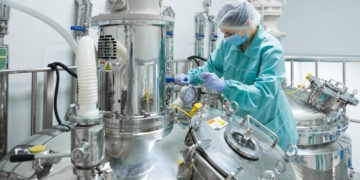
In this blog post, Mike Straumietis, Advanced Nutrients Founder and CEO, looks at the recent rise in global fertilizer prices and the major factors driving the surge.
With approximately 15 percent of total cash costs in the U.S., fertilizer prices are the top concern of farmers, especially as they start considering their potential purchases for the 2022 growing season. Unfortunately, some farmers report fertilizer prices have increased over 300 percent, with highly unpredictable delivery times.
This is not the first time growers have faced such issues. In April 2008, nitrogen prices rose by 32 percent, phosphate by 93 percent, and potash by 100 percent. Prices remained at this peak throughout 2009 before dropping to pre-2007 numbers at the end of the year.
From Domestic Demand to a Sluggish Industry
The fertilizer price surge of 2008 was largely due to strong domestic and global demand, low fertilizer production, and the difficulty of the fertilizer industry in the U.S. to adjust its production levels. These days, they are affecting prices again, says Mike Straumietis.
The main nutrients used in the production of the country’s primary row crops have all gone through the force of increasing prices. These nutrients include nitrogen (liquid nitrogen, anhydrous ammonia, or urea), phosphorus (monoammonium phosphate – MAP and diammonium phosphate – DAP), potassium, or potash.
Compared to September 2020 prices, it can be noted how ammonia has increased by over 210 percent, liquid nitrogen to 159 percent, urea to 155 percent, MAP to 125 percent, DAP to 100 percent, and potash to 134 percent.
Beyond the Control of Producers
Analyzing the average price of each of these nutrients since September 2008, based on the Illinois cost of production dataset, shows that anhydrous ammonia is up 118 percent, well above its usual $656 per metric ton; urea is up 101 percent from $453 per metric ton; liquid nitrogen up 84 percent from $305 per metric ton; DAP up 50 percent from $550 per metric ton; MAP up 61 percent from $555 per metric ton, and potash up 61 percent from $485 per metric ton.
Mike Straumietis explains that fertilizer is a very popular global commodity. Because of this, it can be influenced by various market factors beyond the reach and control of American producers.
Like other commodities traded worldwide, almost 45 percent of the total fertilizer materials are exported. Export has a significant effect on fertilizer prices since the production of fertilizer is not only affected by what is happening in the place it is produced or the cost of production in the said area but also by the demand for fertilizer products from other countries and the shipping rates to get the fertilizer to its destination.
The Top Six
Around a third of all fertilizer demand worldwide is driven primarily by six major crops. On the global stage, corn takes 16 percent of farmers’ demand for farm use, with wheat a close second, at approximately 15 percent. Next, rice represents about 14 percent, vegetables at 9 percent, and fruits and soybeans at 7 and 5 percent, respectively.
As one of the world’s largest producers of corn, soybeans, and wheat, the U.S. is naturally also a large consumer of fertilizer. However, through the advancement of technologies and innovation for on-farm products, the requirement and utilization of fertilizer in the U.S. have decreased, even with increased planted acres of these crops.
While the U.S. lowers its overall consumption of global nutrient use, other countries have increased theirs. Mike Straumietis points out that back in the 1960s, the U.S. accounted for 25 percent of nutrient use worldwide. These days, however, America only accounts for about 10 percent of global use, with American farmers representing only 2 percent of that share.
More on Mike Straumietis and Advanced Nutrients
Mike Straumietis leads Advanced Nutrients. The company has developed the first and only complete growing system that optimizes all phases of the vegetative and bloom cycles to bring crops their true genetic potential. As a result, the annual sales of plant nutrients and fertilizers of Advanced Nutrients have reached nine figures, making it a billion-dollar company.













